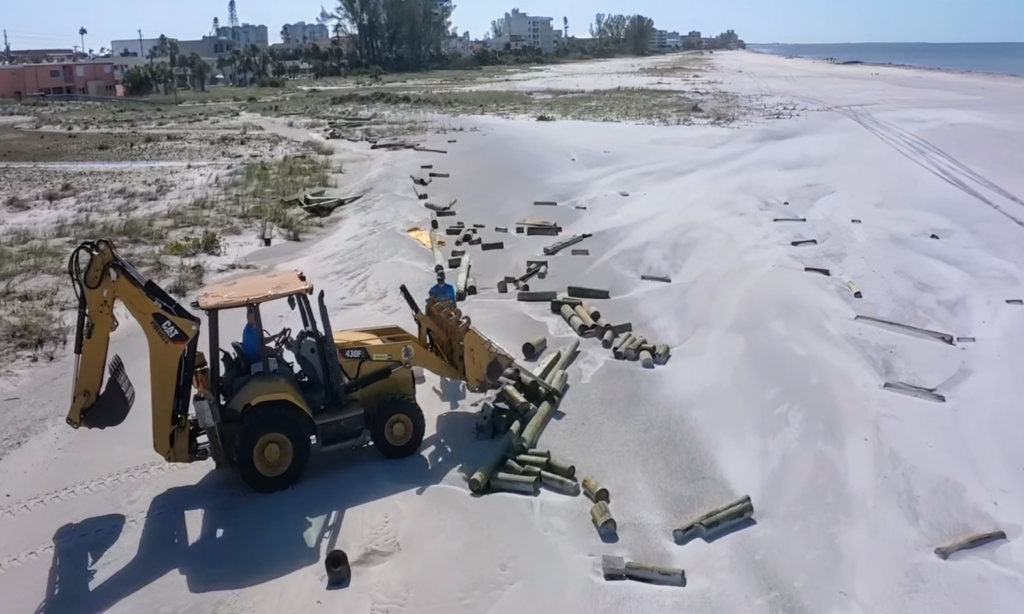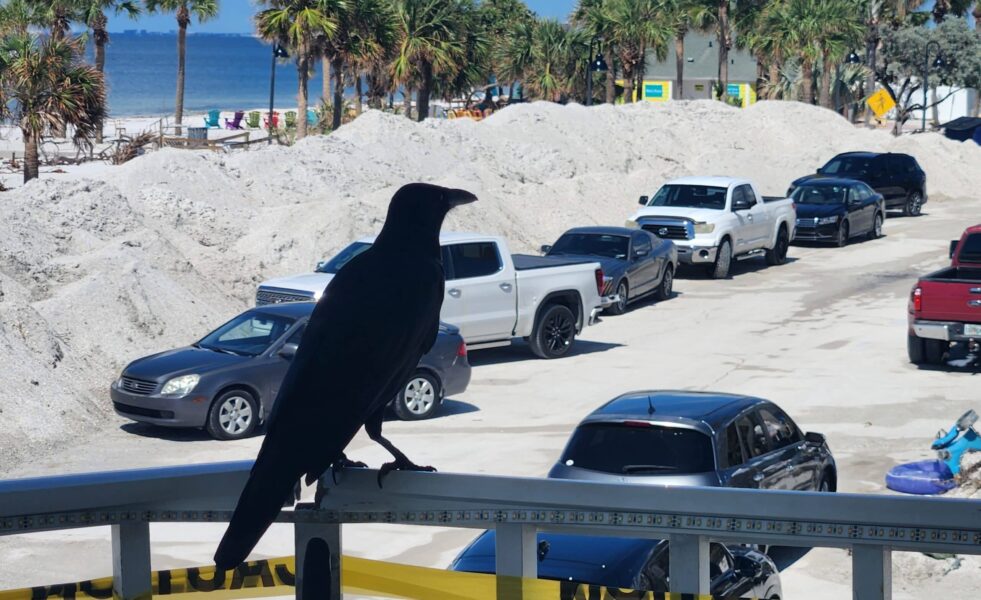Back-to-back storms brought billions of dollars in damages to Pinellas County’s coastal communities; local and state officials believe the U.S. Army Corps of Engineers deserves some blame.
Dr. Wes Brooks, chief resiliency officer for the State of Florida, did not mince words when discussing the federal agency’s role in recent widespread flooding. He joined Commission Chair Kathleen Peters, Rep. Linda Chaney, Rep. Nick DiCeglie and Kelli Hammer Levy, county public works director, in Indian Rocks Beach for a post-hurricane update Friday.
Brooks said the Army Corps failed to submit a $60 million local emergency beach renourishment spending plan for congressional approval in 2023. He blamed the agency’s national leadership for not protecting the county from “billions of dollars in additional damages” during Hurricanes Helene and Milton.
“That’s a dereliction of duty by the Army Corps of Engineers,” Brooks said. “And we are absolutely focused on making sure the bureaucrats in Washington, D.C. – whether under the outgoing administration or the new incoming administration – are not given the room to continue to mess around with Floridian lives.”
Peters called the beaches critical infrastructure that protects people and property and propels the local economy. Levy noted that coastlines, like roads or bridges, also require periodic maintenance.
Renourishment costs topped $60 million after Hurricane Idalia brought an over four-foot storm surge to the area in August 2023. Pinellas qualified for federal emergency assistance, which the Army Corps subsequently blocked due to property owners refusing to sign perpetual easement documents.
Helene’s storm surge more than doubled Idalia’s, and Milton arrived 12 days later with 100 mph gusts and over a foot of rain. Levy believes the county lost roughly a million cubic yards of sand during the storms.
That is nearly the same amount distributed during extensive renourishment projects in 2018 before a longstanding impasse with the Army Corps. “Flood risk protection – that’s their job in this whole thing,” Brooks said of the agency.
“Somebody needs to be held accountable at the Army Corps for that very bad benefit-cost analysis decision.”
The beaches are the county’s primary economic driver. Peters noted the barrier islands are also the first line of defense against storms.
She said the nearly six feet of sand eroded since Idalia would have absorbed much of the wave energy that inundated coastal communities during the latest storms. Levy agreed with that assessment.
She said Sunset Beach in Treasure Island and Belleair Beach, just north of Indian Rocks, likely suffered the most damage. The county recently self-funded two renourishment projects – Pass-a-Grille Beach and Sunshine Beach in Treasure Island.
Levy said those areas, coincidentally, “performed really well” during the storms. That underscored Peters’ point “about a strong berm being part of that first line of defense.”

Hurricane Milton negated recovery efforts that began after Hurricane Helene. Photo: City of Treasure Island.
There was also good news at the briefing. Levy said she submitted two emergency renourishment permit requests to the Army Corps for review.
Peters noted she would discuss a previously mentioned Army Corps “workaround” with federal officials Friday afternoon. She expressed optimism that the administration would “continue to follow up with the resources they’ve already provided for us.”
Peters said the goal is to begin rebuilding beaches before the winter storm season. Levy said federal officials could release the emergency funding blocked by the Army Corps after Idalia.
County leadership has also requested a similar damage assessment for Helene and Milton. Levy said that could exponentially increase renourishment funding. She explained that temporary public access construction easements could also provide a solution.
While the beaches are significantly “thinner,” Peters stressed that “they’re still as beautiful as ever.” She said 80% of hotels are ready for visitors, and all cultural attractions “opened right away.”
“And no matter what happens, if the Army Corps doesn’t step up, the county is prepared to do whatever it takes to make sure we bring our beaches back,” Peters added. “This is a great destination, and it always will be.”

